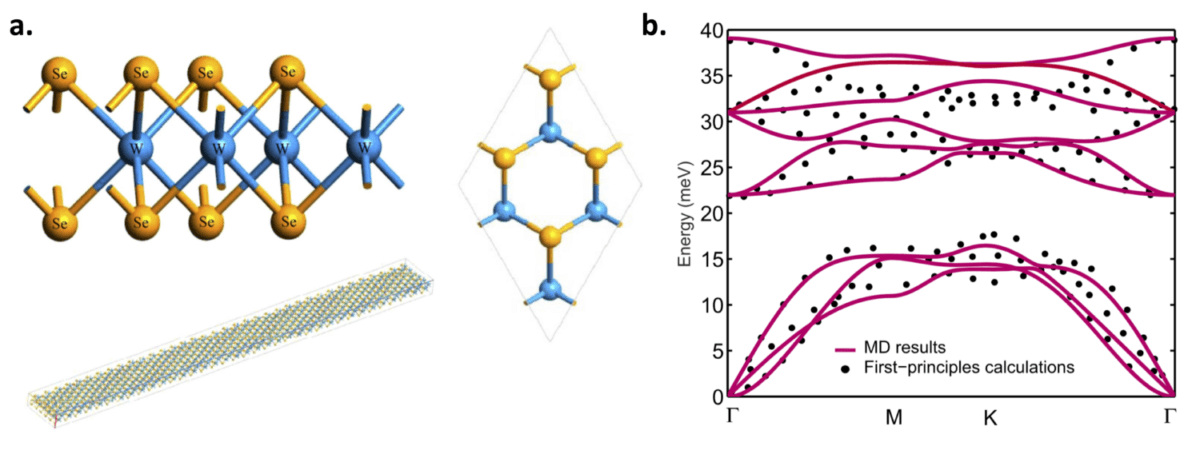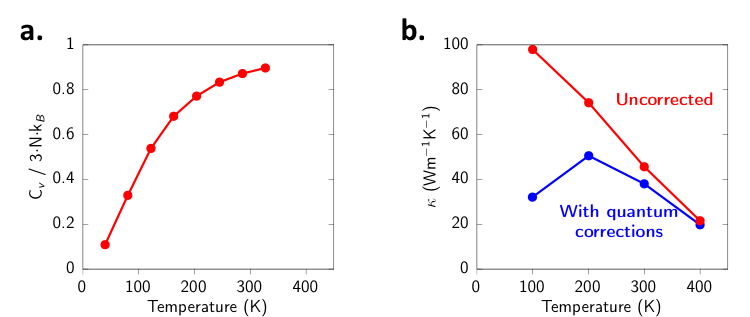Thermal Conductivity of 2D Materials
Thermal transport in 2D materials is an important consideration during the synthesis of layered materials by exothermic chemical vapor deposition and during operation of 2D electronic devices. The USC and Missouri teams have developed a computational framework to accurately describe thermal transport in transition metal dichalcogenides using molecular dynamics simulations.
The research team from the University of Missouri has developed a workflow to construct empirical non-reactive forcefields that can accurately describe the structural, mechanical and thermal properties of two dimensional and layered materials.

Structure of the WSe2 monolayer for thermal conductivity calculations. The parametrized empirical forcefield accurately reproduces the phonon dispersion curve of the WSe2 monolayer.
The USC center team led by Prof. Vashishta has expanded upon the work by incorporating quantitatively the effect of quantum mechanically accurate specific heat correction to thermal conductivity and the influence of naturally occurring isotopic distribution to provide the most realistic estimation of two dimenstional thermal conductivity.

a. Quantum-corrected specific heat of the MoS2 monolayer as a function of temperature. b. Application of quantum corrections leads to significant reduction in the calculated thermal conductivity at low temperatures
Publications
- Thermal conductivity of single layer WSe2 by a Stillinger-Weber potential. P. Norouzzadeh and D. J. Singh, Nanotechnology 28, 075708 (2017).
- Cross-plane thermal conductivity of tungsten diselenide. P. Norouzzadeh and D. J. Singh, Phys. Stat. Solidi C 14, 1700078 (2017).
- Thermal conductivity of monolayer MoS2 with quantum specific heat corrections and isotopic effects. P. Rajak, A Krishnamoorthy, A. Nakano, R. Kalia, P. Vashishsta. In preparation.
PIs involved in the research
- Priya Vashishta (USC)
- David Singh (U Missouri)
Published on May 30th, 2017
Last updated on January 28th, 2020

